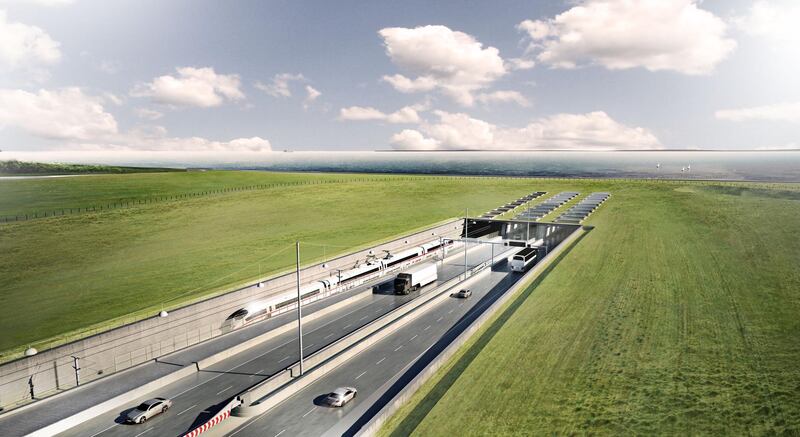Denmark has announced that construction of what will be the world's longest submerged tunnel, connecting it with neighbouring Germany, is due to begin next year.
A rare cross-border initiative between the countries, the tunnel could become the most expensive infrastructure project in Denmark's history, with an estimated price tag of 52.6 billion Danish crowns (Dh28bn).
The Femern Belt link, which includes an 18-kilometre-long rail and road tunnel with an electrified double-track railway and a four-lane motorway, will connect the Danish island of Lolland and Puttgarden in Northern Germany.
Construction work in Denmark is due to start on Lolland on January 1, 2021, the Danish transport ministry said last week.
The consortium in charge of the project had planned to begin construction in mid-2020, but "among other things because of the corona-crisis this had not proved possible", the ministry said
On the German side, the start of work awaits a court decision to validate approval already given by authorities.
Unlike other underwater tunnels, like the Channel Tunnel linking Britain and France, and Japan's Seikan Tunnel under the Tsugaru Strait, which both have longer underwater sections, the new tunnel between Denmark and Germany will not be under the seabed.
Instead, the tunnel will be constructed from hollow concrete sections that will be submerged and placed into a trench dug into the floor of the Baltic Sea.
The tunnel, which should be operational by mid-2029, will link the German and Danish regions in 10 minutes by car and seven minutes by train, instead of an hour by ferry, or a 160-kilometre detour through the Danish region of Jutland.
"The Femern Belt link will be a new gateway to Europe and a new gateway for future green transport solutions," Danish transport minister Benny Engelbrecht said.
In March, EU state aid regulators approved Danish financial support to the project, saying that the positive effects of the project would clearly outweigh any potential distortion of competition.
Denmark's government first announced plans for the project in 2015 with a completion date in 2024, but the tunnel is now expected to open for traffic in 2029.








